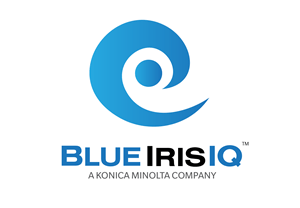The demand for printed materials remains strong.
The Printer and MFP Subcommittee of the Japanese Business Machine and Information System Industries Association (JBMIA) recently announced the results of a domestic survey on “business areas where paper output remains strong,” a topic of great interest in the MFP/printer industry. These findings were presented during the subcommittee’s 2023 annual report session, held on July 12.
The study targeted industries such as education, healthcare, welfare, caregiving, and retail/sales, where paper output was thought to remain high. The investigation confirmed that “outward-going printed materials” intended for students, patients, government offices, and customers remain prevalent. Conversely, “inward-going printed materials” within companies and organizations are clearly in decline. The subcommittee has termed this trend the “donut effect” of printed materials. Although the potential exists for the digitization of regulatory documents under Japan’s push for digital transformation, the survey didn’t show significant changes in this area.
In the 2023 survey, committee members visited users in the sectors identified as having significant paper usage: education, healthcare, welfare, caregiving, and retail/sales. They interviewed them based on six pre-defined hypotheses: work style, cost reduction, security awareness, environmental awareness, legal regulations, and social environment changes. The study asked users whether paper output had increased, decreased, or stayed the same in each category.
The results revealed little difference between the hypotheses and the actual findings, with the subcommittee’s predictions being somewhat more pessimistic. Of the six factors, cost reduction had the greatest influence on paper output, with all industries showing strong efforts toward paperless operations. However, these inward-going printed materials—such as meeting documents, statistical reports, internal reports, management documents, slips, and internal notices—make up a relatively small proportion of the print volume.
On the other hand, printed materials intended for students, patients, government offices, and customers remain prevalent. These outward-going printed materials include significant output in the following areas:
- Education: At the surveyed universities, printing flyers for club recruitment in April (the start of the academic year) and for campus festivals in October was high, alongside a large volume of paper-submitted assignments.
- Healthcare: For patient-first services, paper is heavily used for information sharing, such as medical questionnaires. Additionally, large quantities of printed documents, such as receipts and accounting cards, are produced for doctors’ review.
- Welfare/Caregiving: Users need paper to share information. Some workflows, such as written reports for home care services, and administrative rules mandate that records be kept for seven years.
- Retail/Sales: Due to the slow progress of digital transformation in these businesses, fax is still heavily used. In the surveyed automobile sales company, service maintenance reports represented a significant portion of the printed output, and this area was identified as slow to digitize.
Although the volume of inward-going printed materials continues to decline, the volume of outward-going printed materials remains robust, leading to the so-called donut effect in paper output. Even as overall paper output is gradually decreasing, the percentage of outward-going printed materials remains significant, creating a gradual decline in paper usage.
However, further monitoring is necessary; the Japanese government’s promotion of digital transformation policies and the digitization of regulatory paper submissions could significantly impact paper output. Despite no significant impact of environmental awareness on paper output, the Printer and MFP Subcommittee noted the need for further investigation.





